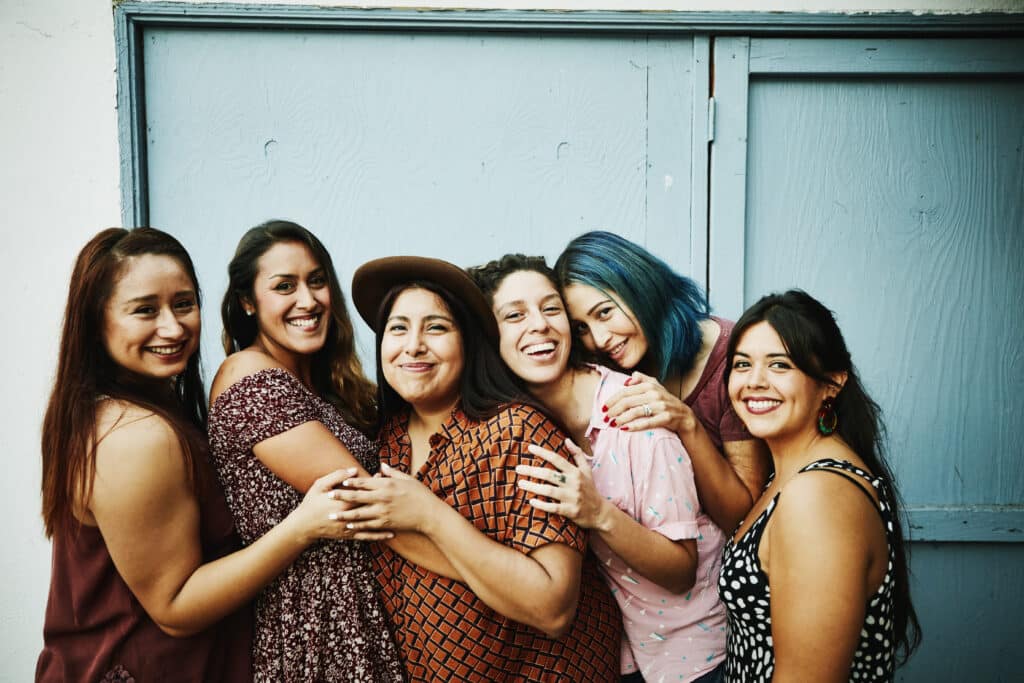Hispanic Heritage Month is celebrated every year in the U.S. from September 15th to October 15th. Throughout this month, Americans pay tribute to the contributions of generations of Hispanic and Latin Americans to the nation’s heritage and culture.
What is Hispanic Heritage Month?
Hispanic Heritage Month is an official celebration in the United States, with entities from local governments to federal agencies to the National Park Service taking part. These agencies use the term “Hispanic” as it refers to the official event.
As the NPS explains on their site, “Hispanic refers to a person who is from, or a descendant of someone who is from, a Spanish-speaking country. This includes Spain. Latino/a or Latinx refers to a person who is from, or a descendant of someone who is from, a country in Latin America.”
In this article, we use the term “Hispanic Heritage Month” in accordance with the official event title in the United States. We also recognize that individuals name their identity and heritage in different, and equally valid, ways.
What Does the Month Celebrate?
The word “Hispanic” refers to the Spanish-speaking world. The official poster for this year’s Heritage Month reflects that fact. The poster, sponsored by the National Council of Hispanic Employment Program Managers, celebrates the many nations and territories represented under the umbrella of “Hispanic Heritage.” These include:
- Argentina
- Bolivia
- Chile
- Cuba
- Colombia
- Costa Rica
- Dominican Republic
- Ecuador
- El Salvador
- Guatemala
- Honduras
- Mexico
- Nicaragua
- Panama
- Paraguay
- Peru
- Puerto Rico
- Spain
- Uruguay
- Venezuela

Hispanic Heritage Month at Remitly
At Remitly, many of our customers, employees, and friends trace their roots to the countries of the Hispanic world. We’re proud to work with and serve them.
Naz H., a Senior Researcher, was born in Juarez, Chihuahua. “My parents moved to Seattle when I was very young. We’d visit every year or two and family would come stay with us for months at a time.”
He adds, “My mom is Mexican, and my dad is Lebanese. I grew up in a ‘mixed’ family and mostly in the U.S. My connections to my parents’ home countries and Mexico, my birth country, are still very strong for me.”
Carmen T., a Fraud Investigator at Remitly, hails from Nicaragua. She says, “people usually have their doors open in the small towns and the neighbors are always sitting outside of their houses chatting with each other. I love how easy and safe it is to visit different parts of our country and participate in different activities—volcano boarding on an active volcano and historic towns to our Caribbean coast.”
And don’t forget about the cuisine, she says. “I love our food—tortillas recien palmeadas with fresh cheese and gallo pinto. Pair it with a cup of our coffee or pinol.”
Isa T., a Sr. Copywriter, moved to the U.S. from Venezuela in 1994. She says, “Growing up in Caracas until the age of 21 was a blessing. For one, it has the best weather of all the places I have lived. Venezuela is home to Angel Falls, the tallest falls in the world. Our typical food, the arepa, is famous worldwide.”
Christian O., a Product Manager, also grew up in Venezuela and describes his home country as nothing short of “magical.”
Hispanic Heritage Month: How It Got Started
In 1968, Hispanic Heritage Month was first established as a week of commemoration, also known as Hispanic Heritage Week, with legislation passed under President Lyndon B. Johnson. It was eventually expanded to the current month-long tribute in 1988 under President Ronald Reagan.
This is a significant month for the Latin American communities in the U.S., along with independence day celebrations for Guatemala, Costa Rica, El Salvador, Nicaragua, Mexico, and Chile all falling between September 16 and 18. Additionally, Día de la Raza falls on October 12.
Latino American history is United States history—since the 1500s, in fact. Thus, Hispanic communities are among the oldest and most established cultural groups in our diverse society. What’s more, immigration from many Latin American countries in the past century has greatly diversified Hispanic culture in the U.S., providing even more reasons to celebrate this month.
Economic Impact in the U.S.
As of 2016, 57.5 million people of Hispanic origin live in the United States, making this community by far the nation’s largest ethnic minority. 17.8 percent of the country’s population traces their roots to Hispanic or Latin American ancestry, making this month of recognition significant to everyday life in almost every community!
Latino American individuals have made important contributions to the U.S. economy over their long presence in the American history. One of these contributions is in entrepreneurship. In 2015, Hispanic-owned businesses numbered 312,738 nationwide, and reported over $320 billion in sales (including over $60 billion in sales by woman-owned Hispanic businesses).
Latin Americans are becoming increasingly key to the country’s economy overall. In 2015, the Latin American workforce was responsible for 12 percent of the entire nation’s gross domestic product. By 2020, researchers estimate that Latin Americans will contribute to nearly a quarter of all GDP growth, and account for nearly 13 percent of the nation’s billions in goods produced and services provided.

Cultural Impact in the U.S.
The economy is only one measure of how Latin Americans have enriched the United States over centuries. As Spanish speakers now number upwards of 13 percent of the U.S. population, bilingualism and interest in the Spanish language have spread, especially in states like California, Texas, and Florida, where Hispanic communities make up a large part of the cultural landscape.
Interest in and availability of traditional Latin American foods have also grown greatly in recent years. Foods like chips and salsa, tacos, pupusas, empanadas, and the distinctive roast chicken of Peru are becoming takeout and eat-in staples in many metro areas. While providing a taste of home for the communities who run and host them, these establishments open a door tor everyone who is lucky enough to try a taste.
Sports, cultural interests, and traditions from around Latin America can be explored through Univisión and Telemundo media, which broadcast nationwide.
Across the country in many metro areas, large festivals celebrate important holidays and occasions, such as Día de los Muertos (Day of the Dead), Cinco de Mayo (commemorating the 1862 Battle of Puebla, and Mexican heritage), and Las Posadas (Latin American-style Christmas caroling).
With such a large percentage of Americans who have Latin American heritage, and with so many Latin American people contributing to the economy, it may come as no surprise that we celebrate many high-achieving Latin American public figures during this month as well.

How to Celebrate Hispanic Heritage Month
Beginning in mid-September and continuing well into October, there are a number of ways you can honor Hispanic and Latin American heritage in the U.S.
Cook and share food, visit your favorite Hispanic-owned restaurants (or get takeout!) and make time to call home.
And if you’re moved to send some dinero to honor your loved ones this month, Remitly makes it easy.
